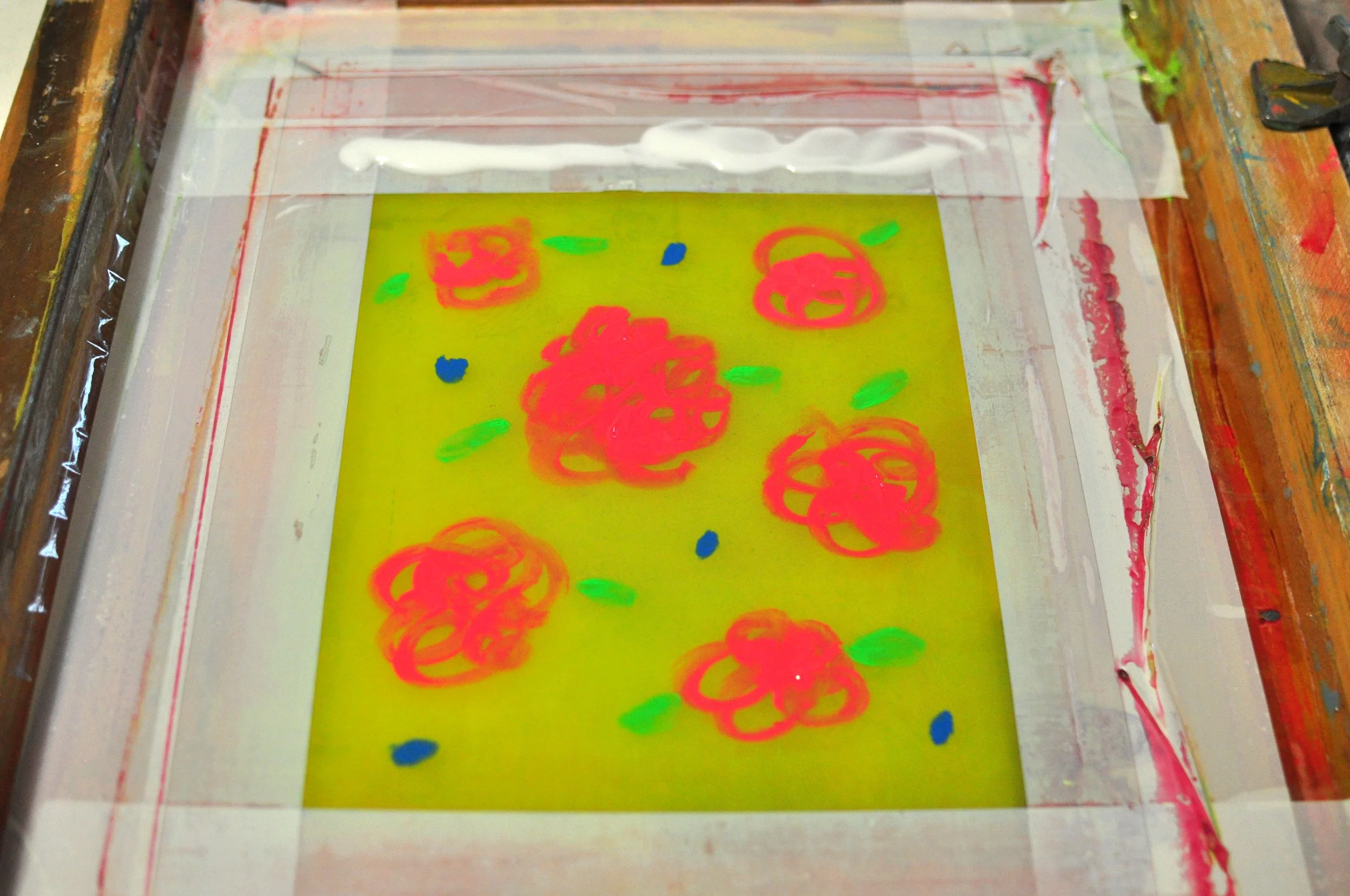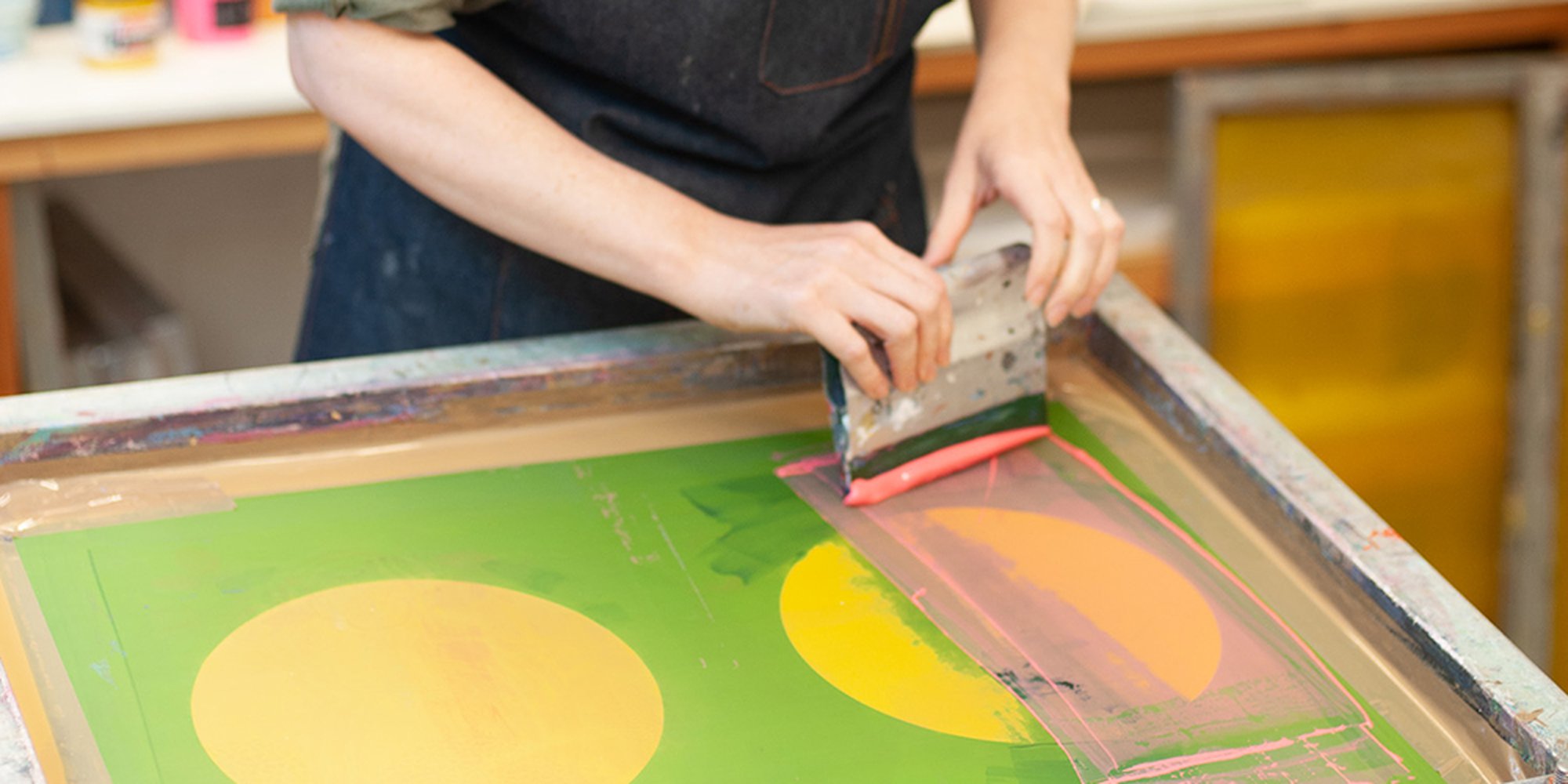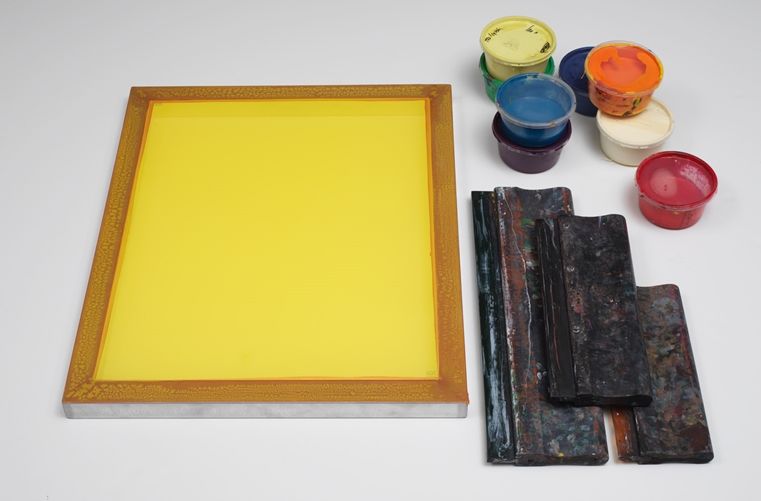The Necessary Overview to Comprehending Screen Printing and Its Versatile Makes use of
Screen printing has an abundant background that dates back to ancient times, advancing right into a sophisticated strategy utilized across numerous markets today. This guide checks out the details of the screen printing process, detailing its applications in fashion, advertising, and home style - 10:9 Design near me. Recognizing these fundamentals can open creative potential for both business and artistic projects. The complying with areas will disclose crucial ideas and methods to enhance one's screen printing endeavors
The History of Screen Printing
Although screen printing has roots that trace back centuries, its advancement reflects the artistic and technical innovations of numerous societies. Coming from in old China, the technique was initially used for enhancing textiles and later spread to Japan, where it came to be indispensable to Ukiyo-e woodblock printing. The method shifted to Europe in the 18th century, where it gained popularity among artisans and commercial printers. The invention of photo solution in the 20th century transformed screen printing, permitting even more detailed layouts and higher performance. Musicians like Andy Warhol better thrust its popularity, using the tool to produce iconic jobs that combined commercialism and fine art. By the late 20th century, screen printing had developed itself as a functional strategy, employed in vogue, advertising, and great art. Today, it proceeds to develop, integrating electronic innovation and broadening its applications throughout different industries.
The Screen Printing Process Explained
Screen printing changes creative visions into tangible styles with a series of accurate steps. Initially, an image is produced and afterwards transferred onto a screen, typically constructed from fine mesh fabric extended over a structure. A light-sensitive solution is used to the screen, which is exposed to light, solidifying in areas not covered by the photo. After rinsing the unhardened solution, a stencil is formed.
Next, the screen is placed over the substrate, whether it be textile, paper, or one more material. Ink is after that pressed via the open locations of the pattern using a squeegee, depositing the style onto the substratum listed below. This process can be repeated for several colors, needing separate screens for every color. The printed product is treated using warmth to assure the ink adheres properly, resulting in a long lasting, dynamic design prepared for usage.
Kinds Of Screen Printing Techniques

Additionally, specialized techniques, such as discharge screen printing, remove dye from the material to develop softer prints, while foil screen printing applies metal foil to accomplish a shiny surface (10:9 Design reviews). Each technique provides distinct qualities, catering to different creative requirements and manufacturing ranges, inevitably increasing the opportunities within the screen printing domain
Applications of Screen Printing in Different Industries

In addition, the signage and advertising sectors make use of screen printing for developing appealing screens and banners. This approach enables strong colors and intricate designs that catch attention. In electronic devices, screen printing is employed for applying conductive inks to circuit boards, vital for component connections. The home style sector welcomes screen printing to generate unique styles on fabrics and wall surface art. On the whole, screen printing offers as an essential device throughout diverse areas, boosting products with individualized and visually appealing graphics.
Tips for Successful Screen Printing Projects
While undertaking a screen printing task, cautious attention to detail can considerably enhance the last end result. Initially, choosing top notch products read more is necessary; this includes the screen, inks, and substrates. Using appropriate mesh matters can impact ink deposition and detail resolution. Prep work is similarly crucial; detailed cleaning of displays and proper exposure times assure crisp prints.
Next, exact registration is vital for multi-color prints. Utilizing placement devices can assist achieve specific layering. In addition, testing prints on scrap products prior to manufacturing helps identify potential issues without wasting resources.

Frequently Asked Concerns
What Materials Are Ideal for Screen Printing on Fabric?
Cotton and polyester blends are optimal for screen printing on textile as a result of their longevity and ink absorption. Additionally, specialized textiles like silk or canvas can produce distinct textures and finishes, improving the overall design high quality.
Just how Do I Tidy and Maintain Screen Printing Equipment?
To clean up and maintain screen printing tools, one need to on a regular basis clean displays with appropriate solvents, check mops for wear, lubricate relocating components, and store all items in a dry, dust-free environment to extend their lifespan.
What Are the Ecological Impacts of Screen Printing?
Screen printing can have substantial ecological impacts, consisting of chemical waste from solvents and inks, water usage throughout cleansing processes, and power consumption. Lasting methods and green products are essential for lessening these adverse impacts.
Can Screen Printing Be Done at Home Successfully?
Screen printing can be properly done at home with the right materials and strategies. Hobbyists can develop high quality prints, though success depends on their skill degree, equipment, and understanding of the procedure entailed.
What Are the Costs Connected With Starting a Screen Printing Service?

Beginning a screen printing service involves prices for devices, materials, and office. First costs usually vary from a few hundred to a number of thousand bucks, depending upon the range, quality of equipment, and desired production ability.
Screen printing has an abundant background that dates back to ancient times, developing into an advanced technique utilized across numerous industries today. An additional method, rotating screen printing, employs round screens, facilitating continuous printing on fabric rolls, thereby boosting efficiency for massive manufacturings. Additionally, specialty strategies, such as discharge screen printing, get rid of dye from the textile to produce softer prints, while aluminum foil screen printing uses metallic foil to attain a glossy surface. In the fashion industry, screen printing is widely utilized to develop lively layouts on apparel, making it possible for brands to display their unique styles. Cotton and polyester blends are perfect for screen printing on fabric due to their longevity and ink absorption.